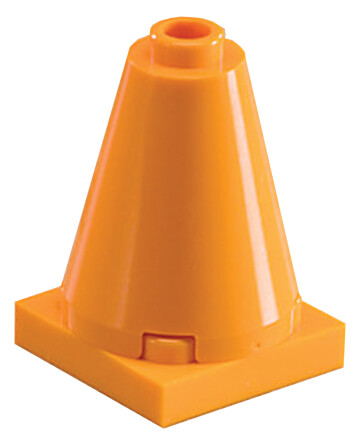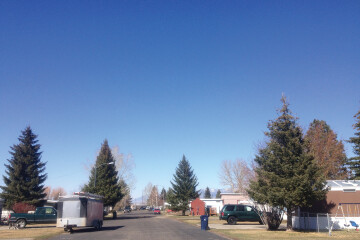The Construction Zone Blues
Be alert! Be aware! Drivers, it is time to get prepared for another road construction season. Do not be afraid. I am going to give you some succinct basics so that you understand what is happening here. Study this article and carry it with you on your summer travels for quick reference. You will arrive at your destination so much more relaxed and refreshed.
We will start with some definitions, so when you encounter these indicators, you will be fully informed and can then make good decisions.
Construction Zone - This is an area where you reduce your highway speed from 97 MPH, to keep up with the trucks, to 35 MPH. You should have a vehicle equipped with aircraft style flaps and brakes to accomplish this task in the 15 feet allowed. Do not worry about that burnt rubber smell coming from your car’s underside; these newer ceramic brakes are great, and will disburse that excess heat quickly. Besides, the tire rubber left on the roadway helps with its maintenance.
In Montana, there are lots of “Start 35 Zone” signs, but apparently there was not have enough money for many “End 35 Zone” signs. Last summer, my wife Theresa and I were driving from Bozeman to that city to the east in Yellowstone County that starts with the letters “Bil.” We came upon a restricted speed zone near Big Timber. However, there was no “End Speed Zone” sign so I drove 34 MPH all the way to “Bil.” Theresa was quite upset at me, but I was just following the rules. It took 3 hours. Someone later reported to me that they saw an “End Speed Zone” sign near Bismarck, ND.
Detour Ahead - In planning your summer travel plans around Bozeman, be prepared for “Detour Ahead” signs. We all know the project on Willson will be this summer’s “bête noire,” but I am well prepared after the last years’ College Street brouhaha. As part of my service to this community, I am willing to share my knowledge with you for free.
Here’s the detour route tutorial and process: slow to 6 MPH since you start the adventure by going over a considerable “bump” in the street. Occasionally, this bump will start to grow and will sooner or later have to find relief by belching. Do not be near the area when this burp occurs, as there will be a lot of “stuff” thrown at your vehicle. Don’t ask, it is just common underground stuff, completely organic, non-GMO, and gluten- free.
Then, start the detour, this being a typical example: go left three blocks until you see a stick with a green ribbon attached to it; turn right and go four blocks south until you get to a post with no flag; continue following this trail which will seem to get very rough. Just ignore the “Hummers only” signs and mountain goats grazing on the side; make a U-turn after two hours and head back to where you started the detour since you are obviously lost. When you arrive back at the starting point, the work crew will have gone home for the day, and the area will be marked “Do not Enter.” Just do another U turn and try the prescribed route again, but this time try it with a better attitude. Don’t be so grumpy.
On highway projects, the detour route speed limit is 2 MPH. If your car idles faster than that, just get out and let some of the air out of the tires. Then you can proceed at the proper speed. Do not exceed this speed limit, as a warning sign advises that the fine for violation is calculated 10 x (3.5410th) (14.676.7) $$.
Survey Crew Ahead - This sign appears approximately seven years before a project is actually scheduled for construction. In Bozeman, the survey crew started on the Kagy repair project in 1945. They have permanent housing facilities on site so they can just walk to work, as there is no place to park anyway. The person operating the surveyor’s transit arrives before dawn and sights in Polaris and Spica. When the others arrive, she will signal someone wearing a green shirt who signals another person, and 1.3 miles away someone will move an orange stake 3 inches. Since this usually hits a rock and will not stand, it is necessary to move it over 2 inches. The markings on the stake read N 32 64’ 26”E Less 2 inches to the left because I hit a rock; sooo sorry…”
Surveys are needed so that the actual construction crew can hit the stakes with their big machines and yell…”yea, take that! We will not build this road where you think it should go, because this is a free country and we have rights…!”
Loose Gravel Ahead - This includes such items as pot hole filler, detour gravel and chip seal. I will cover these all with one big scoop. Before filling pot holes, such as on the 19th South project, the first item of business is to remove the car mufflers, tail pipes, shocks and other detached car parts from the hole. These can be salvaged and recycled as they are from nice new vehicles. Then 14 cubic yards of mix is dumped into the hole. To top it off, fresh loose gravel is placed on the surface. The purpose of the gravel is to allow aggressive drivers the opportunity to pass a vehicle at high speed and throw a nice shower of rocks at the windshield of the slower moving vehicle. This teaches a real life lesson about not getting up to 60 MPH quickly enough after leaving the 2 MPH zone. It is also very good for windshield repair businesses.
Chip Seal - means simply that your new white Audi will be splattered with sticky, gooey tar for the rest of its life, which is a very long time. My solution for this problem: get a black vehicle, it will not show the tar. Do not discuss this solution with others in Bozeman, or there will be a run on black vehicles and you could be forced to travel to a city in Yellowstone County that starts with the letters “Bil” to get a vehicle. Remember, always shop locally.
Come on, admit it, you really learned a lot from this article. Now go boldly forth and do not dread those “Construction Ahead” signs. Say you can’t handle the stress? What a big baby. Dry your tears and get on with it.


